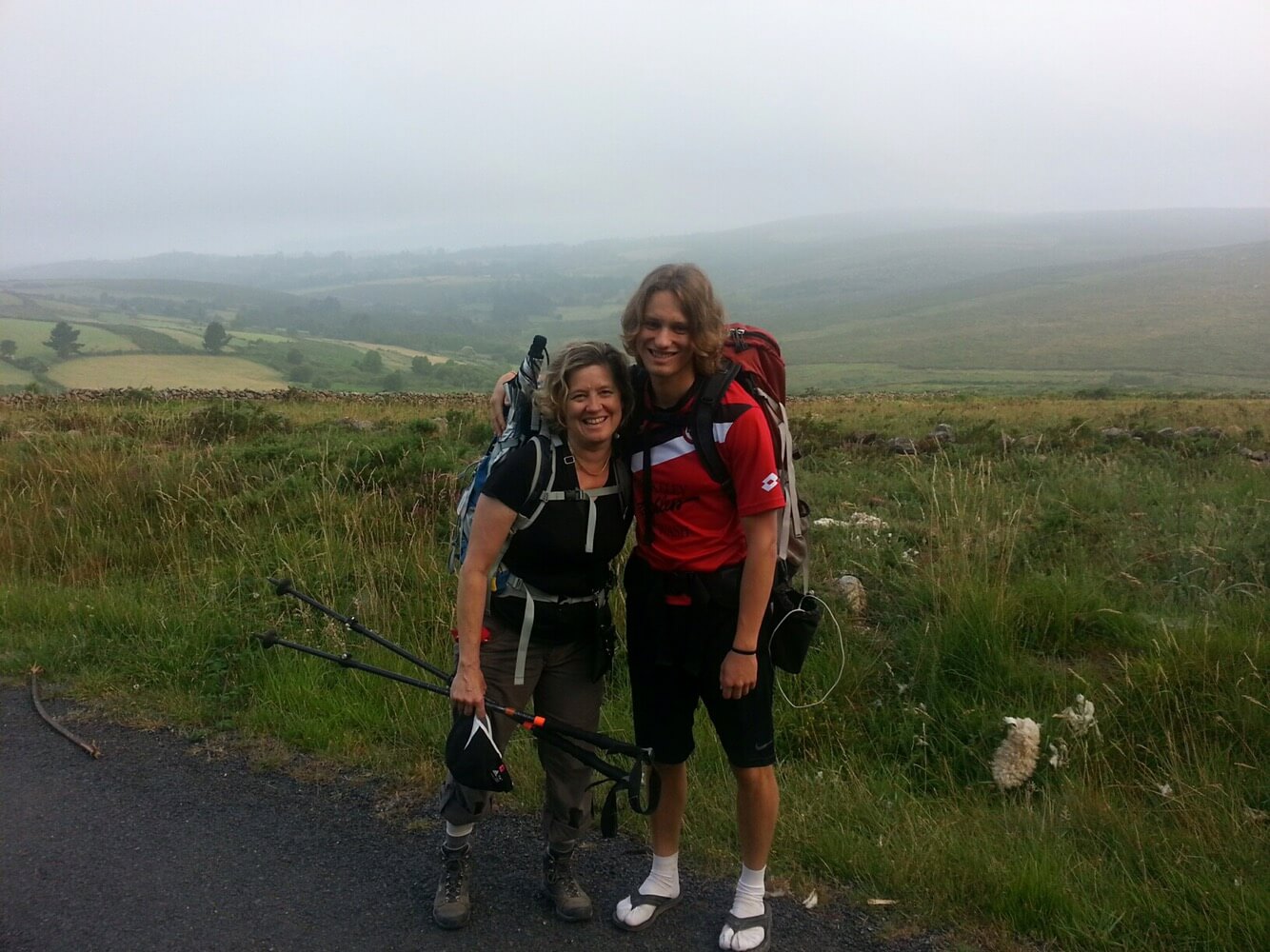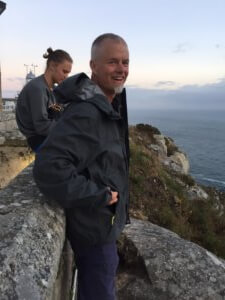Jason here with a guest post. I have loved our experience in Europe, and I’m currently reflecting on a common theme from three of our experiences.
The life of St Teresa, the ministry of the Taizé community, and the spirituality of the Camino Santiago are all marked by a spiritual theme of simplicity. I am compelled by the value, yet also perplexed. How can simplicity shape our lives, especially in our complex culture? Here are a few reflections from this summer, along with ongoing questions.
The Camino’s simplicity is one of clear purpose, discipline, and streamlining of resources. When you are walking 500 miles in a month, you need to know where you are going and exercise full commitment to that purpose. Everything else must go. We packed only the essentials, and when we realized something was not essential we left it behind, carrying only about 10% of our body weight. We established habits and routines for the sake of our daily and overall goals (both the logistical ones like getting over the next mountain, and the deeper ones like growing in prayer or processing a transition). In many albergues, the whole group of 20-50 pilgrims would wake between 5 and 6:30am, pack and begin walking immediately. And in the afternoons, pilgrims could be found washing daily laundry and journaling. You don’t see those disciplines in every group of young adults! Our lives were streamlined: stripped of all extraneous distractions and devoted to purpose. What does this streamlining look like in my normal life? In yours? In what ways are the “pack” of my commitments and possessions adding too much weight? What can and should be left behind in order to help me focus on my essential goals?
The simplicity of Taizé shows up in nearly everything they do. Brother Roger founded the community around what he called three “Realities:” simplicity, mercy, and joy. He felt that these are the aspects of God’s own character that his community was called to embody. I would usually call that a set of operating values. He wanted all three realities to pervade everything the community did. When you visit Taizé to pray, you notice the simplicity in the design of everything, from eating to prayer to living quarters. The schedule and way of life is focused, lacking all distractions. The lifestyle of the Brothers in the community is radically simple as well, involving daily prayers, a commitment to poverty and a focus on their mission (prayer, reconciliation, mercy, and the mobilization of youth). I think the community’s example of simplicity makes them compelling to youth. Hundreds of thousands of young people come to Taizé annually in part because they are drawn to the integrity of the community. What would that kind of simplicity look like in the midst of modern American culture and specifically in the University environment? I am not looking for a rejection of complexity itself, but a clear and simple set of commitments around which to organize one’s purpose in a complex world. I want to live out those commitments with integrity in a purposeful community. I think many want that kind of life.
Saint Teresa of Ávila (see Susi’s last post for thoughts on Teresa) lived out simplicity in Catholic religious life. Teresa was a Carmelite nun for many years, in a time where the Carmelites had significantly loosened the old rules of the order. Nuns and monks mingled with the rest of the community and had a pretty good time, but their commitments to prayer and study were not strong. In her middle age, Teresa felt called by God to lead a reform in the Carmelite order, back to the old rules of poverty and absolute focus on spiritual disciplines. The reformed order she founded was called the “Discalced” Carmelites: literally those without shoes. They said no to everything not essential to their mission of prayer and intimacy with God. Apparently shoes were one such distraction. It was only after her turn toward this focus that Teresa began to experience great depth in prayer. She became one of the great spiritual mystics in history. Through her writing, she has influenced all generations of prayerful Christians since the 16th century. Even Teresa’s actual teaching on prayer carries simplicity at its core. I love the way she teaches the fundamental discipline of reflecting on Jesus’ passion as the essential foundation to all further experiences of prayer. Teresa’s simplicity was that of purpose and lifestyle. She wanted to know and love God, full stop. Toward that purpose, she initiated the reforms necessary to fulfill that purpose in her life and in community. People responded in drastically different ways to Teresa’s reforms. Some opposed them vehemently, perhaps because they threatened the comfortable status quo. She endured great persecution. Others were compelled to know God in the way that Teresa did, and therefore flocked to join the reformed order. Teresa planted 17 new monasteries throughout Spain in her relatively short ministry. I imagine her traveling (without shoes) across Spain with a few others in order to start new communities, and I’m amazed at her commitment. What is my simple purpose, toward which I can organize my life and community? For me, it is very similar to Teresa’s: I want to love God more and more, and faithfully complete the journey he gives me. What simple commitments can facilitate that purpose, and what cultural distractions are preventing it?
As we prepare to return home to the fast pace of California, and for me to the complexity of the University environment, I want to find ways to bring the beauty of simplicity back. If you are a praying person, please pray that God would give us the grace of simple focus as we transition. Also, please give me your thoughts and suggestions about building communities of beautiful simplicity in the midst of a complex world.









